Antelope Valley Historical Setting
Antelope Valley, situated in northern Los Angeles County and the southeast portion of Kern County in Southern California, boasts a rich and diverse history. Here’s an overview of its historical development:Indigenous Peoples and Early Exploration
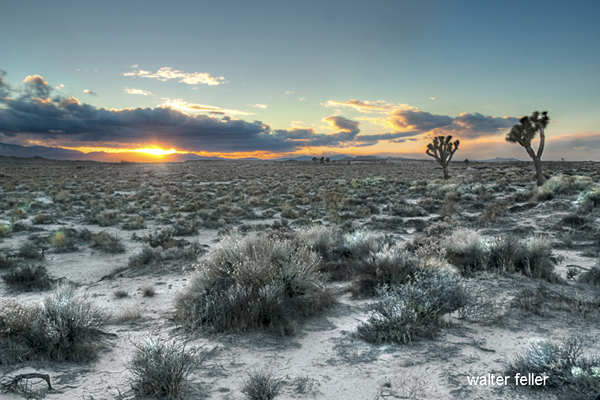
Indigenous Inhabitants: Before European settlers arrived, the valley was home to Native American tribes such as the Kitanemuk, Serrano, and Tataviam. These groups lived off the land, hunting local game, including the pronghorn antelope, which gave the valley its name.
Spanish Exploration:
In the 18th century, Spanish explorers, including Father Francisco Garcés, traveled through the area. The Spanish missions in California significantly impacted the indigenous population, often displacing them and altering their way of life.19th Century Development
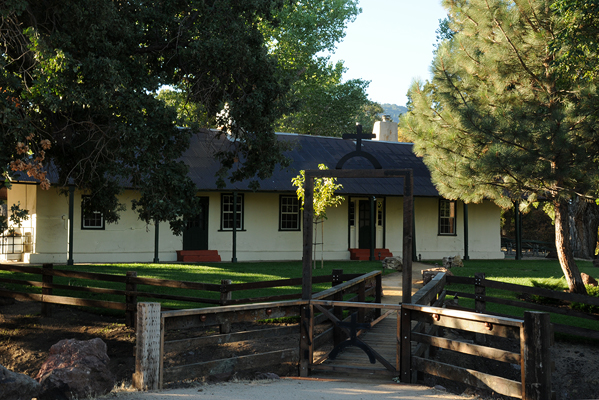
Mexican Land Grants:
After Mexico gained independence from Spain in 1821, the Mexican government issued land grants, encouraging ranching and settlement in the area.American Annexation:
The region became part of the United States in 1848 following the Treaty of Guadalupe Hidalgo, which ended the Mexican-American War. American settlers began moving in, attracted by the promise of land and opportunity.Mining and Railroads:
The late 19th century saw the discovery of gold and borax in the region. This led to a mining boom, bringing an influx of settlers. The arrival of the Southern Pacific Railroad in the 1870s further spurred growth, providing crucial links to markets and other parts of California.20th Century and Modern Era
Agricultural Development:
Early 20th century settlers turned the valley into a significant agricultural hub, growing crops like alfalfa, apples, and pears. The availability of water from the California Aqueduct in the mid-20th century transformed farming practices, allowing for more diverse and intensive agriculture.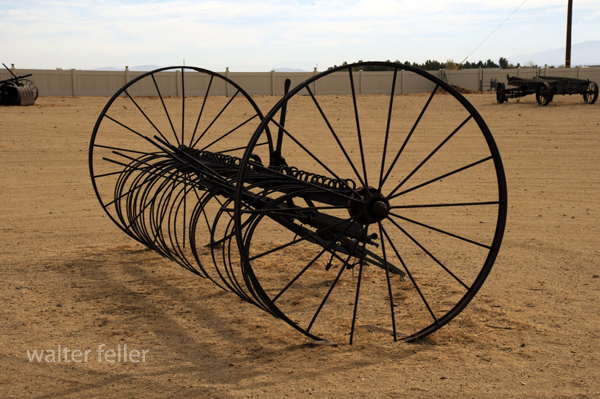
Hay rake
Military and Aerospace:
During World War II and the Cold War, the region became strategically important due to its proximity to Edwards Air Force Base and other military installations. This fostered the development of the aerospace industry, making the valley a critical site for aircraft testing and space exploration.Urban Growth:
Post-World War II, the population of Antelope Valley surged as people moved from the crowded cities of Los Angeles to more suburban and rural environments. The development of communities like Lancaster and Palmdale turned the valley into a suburban extension of the Greater Los Angeles area.Contemporary Era

Economic Diversification:
Today, Antelope Valley continues to grow, with a diversified economy encompassing agriculture, aerospace, renewable energy, and manufacturing. The region also benefits from tourism, particularly during the spring wildflower season when the California poppies bloom spectacularly.Cultural and Natural Heritage:
The valley remains a place of historical and cultural significance, with various museums, historic sites, and natural reserves preserving its rich legacy. Efforts to protect its unique ecosystems and indigenous heritage are ongoing, reflecting a deep respect for its past while looking towards the future.Antelope Valley's history is a tapestry of indigenous cultures, pioneering spirit, industrial innovation, and community development, making it a unique and dynamic region in California's landscape.
Southern Pacific Railroad
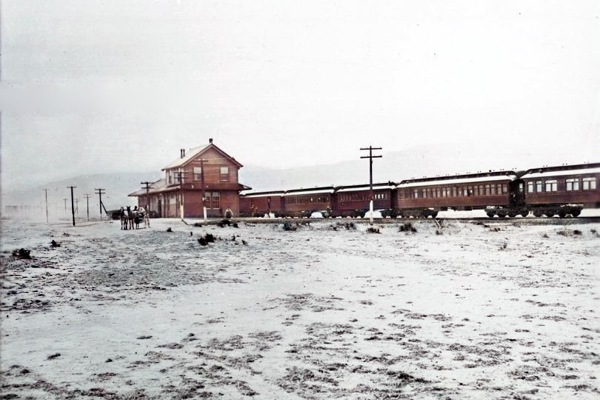
Palmdale Station early 1900s
The Southern Pacific Railroad's impact on the Antelope Valley can be traced back to the late 1800s when the company began extending its lines to connect remote areas of California with larger urban centers. Here are more details on how the Southern Pacific Railroad contributed to the development of the Antelope Valley:
Construction and Expansion:
The Southern Pacific Railroad extended its tracks into the Antelope Valley as part of its broader effort to create a comprehensive rail network across California. This expansion included the completion of the Tehachapi Loop in 1876, which connected the San Joaquin Valley to the Antelope Valley and facilitated smoother passage over the Tehachapi Mountains.Economic Growth:
The railroad made it possible to transport goods, such as agricultural products, minerals, and livestock, from the Antelope Valley to larger markets in Los Angeles and beyond. This connectivity attracted settlers and investors to the region, boosting the local economy.Settlement and Development:
The establishment of rail lines encouraged the growth of towns and communities along the route. Cities like Palmdale and Lancaster began to flourish as they became key stops on the Southern Pacific Railroad line. The availability of rail transport made these areas more accessible, leading to an influx of new residents and businesses.Agricultural Impact:
The railroad facilitated the transportation of agricultural products, which was essential for the valley's farmers. Crops such as alfalfa, fruits, and vegetables could be shipped to markets quickly and efficiently, ensuring their freshness and increasing the profitability of farming in the region.Mining Industry:
The Antelope Valley's mining industry also benefited from the railroad. Minerals extracted from local mines could be transported to processing plants and markets, enhancing the viability and expansion of mining operations.Infrastructure Development:
The presence of the railroad spurred the development of additional infrastructure, including roads, utilities, and public services. This infrastructure further supported the growth and modernization of the Antelope Valley.Cultural and Social Impact:
The railroad connected the Antelope Valley to the cultural and social hubs of Southern California, allowing for the exchange of ideas, goods, and services. This connection helped integrate the valley into the broader cultural and social fabric of the region.Overall, the Southern Pacific Railroad's influence on the Antelope Valley was profound, transforming it from a remote, sparsely populated area into a thriving region with a diverse economy and vibrant communities.
Earliest communities
The earliest communities in the Antelope Valley were significantly influenced by the arrival of the Southern Pacific Railroad and other pioneering developments. Here are some of the earliest communities in the region:Lancaster:
One of the earliest and most prominent communities in the Antelope Valley, Lancaster was established in the late 19th century. The Southern Pacific Railroad established a station here in 1876, which spurred the town's growth. Lancaster became a central hub for agriculture and commerce, attracting settlers and businesses.Palmdale:
Palmdale, originally known as Palmenthal, was founded by German and Swiss settlers in 1886. The community initially struggled due to harsh weather conditions and poor soil, but the arrival of the railroad helped Palmdale grow. The establishment of a post office in 1890 marked its official recognition as a town.Rosamond:
Established in 1877, Rosamond was named after the daughter of one of the Southern Pacific Railroad officials. The town grew as a mining and agricultural community, benefiting from its proximity to the railroad and the development of nearby mines.Acton:
Founded in the late 1880s, Acton was primarily a mining town. The discovery of gold and other minerals in the surrounding hills attracted prospectors and settlers. The Southern Pacific Railroad provided crucial support by transporting ore and supplies, helping Acton thrive.Mojave:
Mojave was established in 1876 as a construction camp for the Southern Pacific Railroad. It later developed into a significant rail hub and supply center for mining operations in the surrounding desert regions. Mojave's strategic location at the junction of several rail lines contributed to its growth and importance.Elizabeth Lake and Lake Hughes:
These communities were among the earliest settlements in the western Antelope Valley. Named after nearby lakes, they attracted settlers interested in agriculture and ranching. The completion of the railroad made these areas more accessible and supported their development.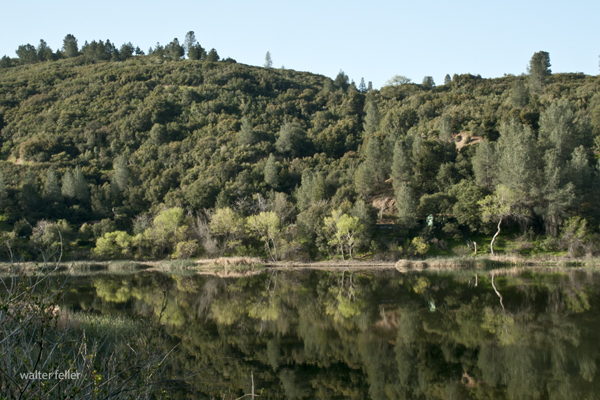 Lake Hughes
Lake Hughes
Tehachapi:
Although technically outside the Antelope Valley, Tehachapi played a crucial role in the region's rail infrastructure. The construction of the Tehachapi Loop, a marvel of engineering, connected the Antelope Valley to the Central Valley, facilitating transportation and trade.These early communities laid the foundation for the growth and development of the Antelope Valley, transforming it from a remote frontier region into a thriving area with a diverse economy and vibrant towns.
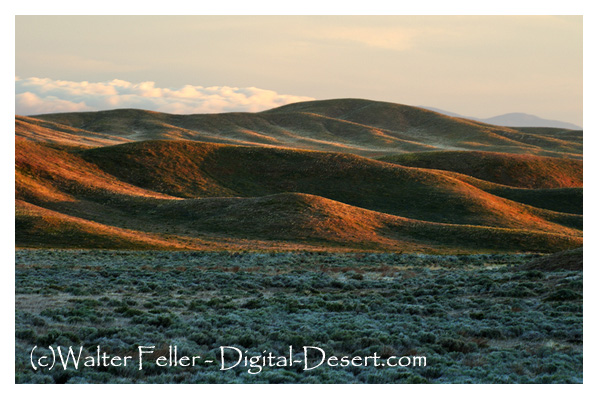


Cowboys at H.J. Butterworth Corral, c.1905-1910 - City of Lancaster Museum

Antelope Valley Map
Southern Pacific
First Railroads

Points of Interest
Geography
Flora and Fauna
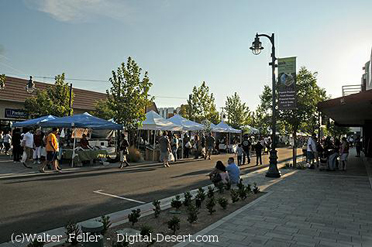
Lancaster
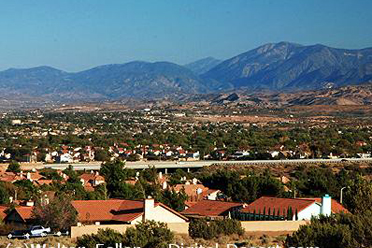
Palmdale